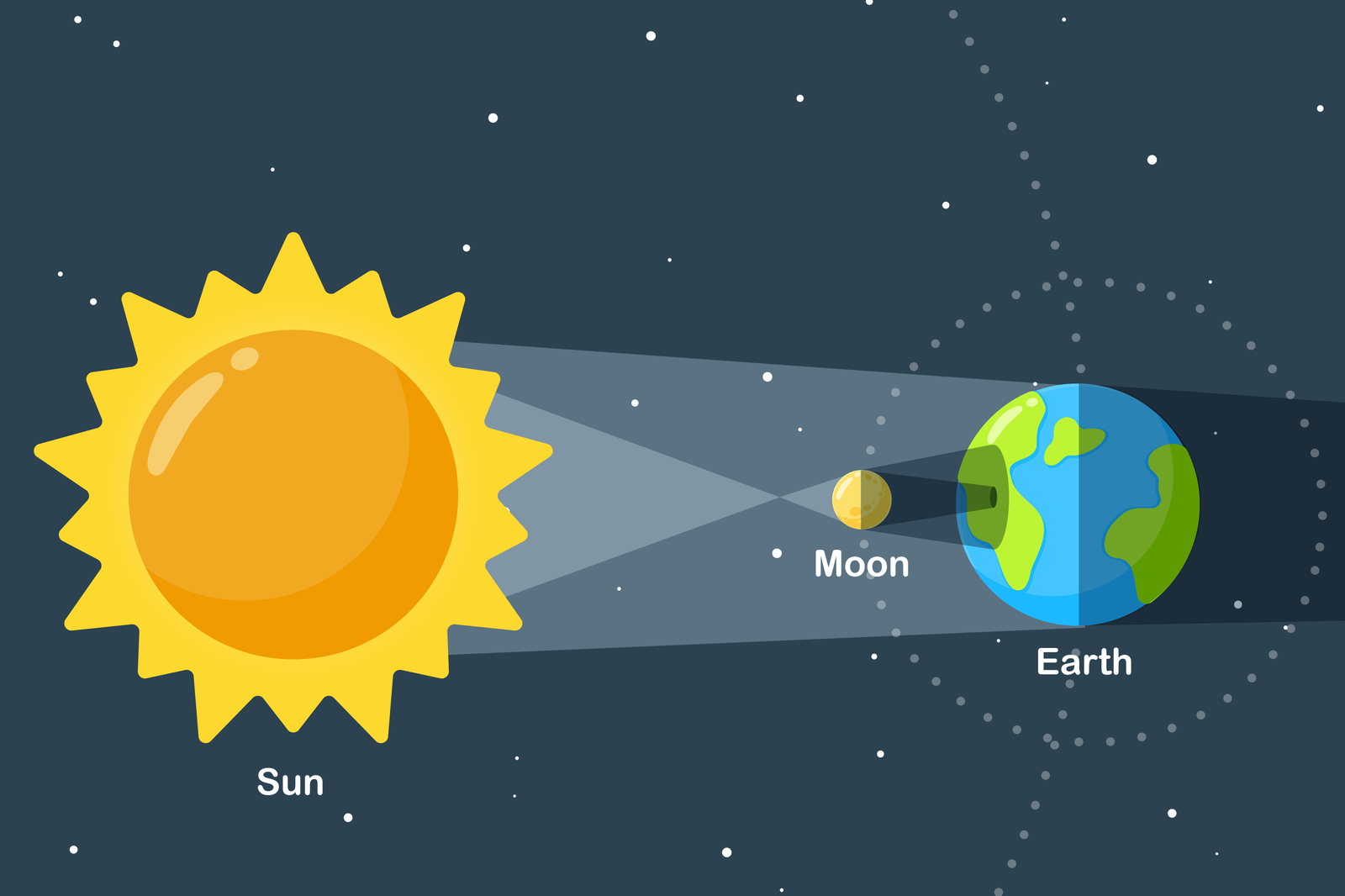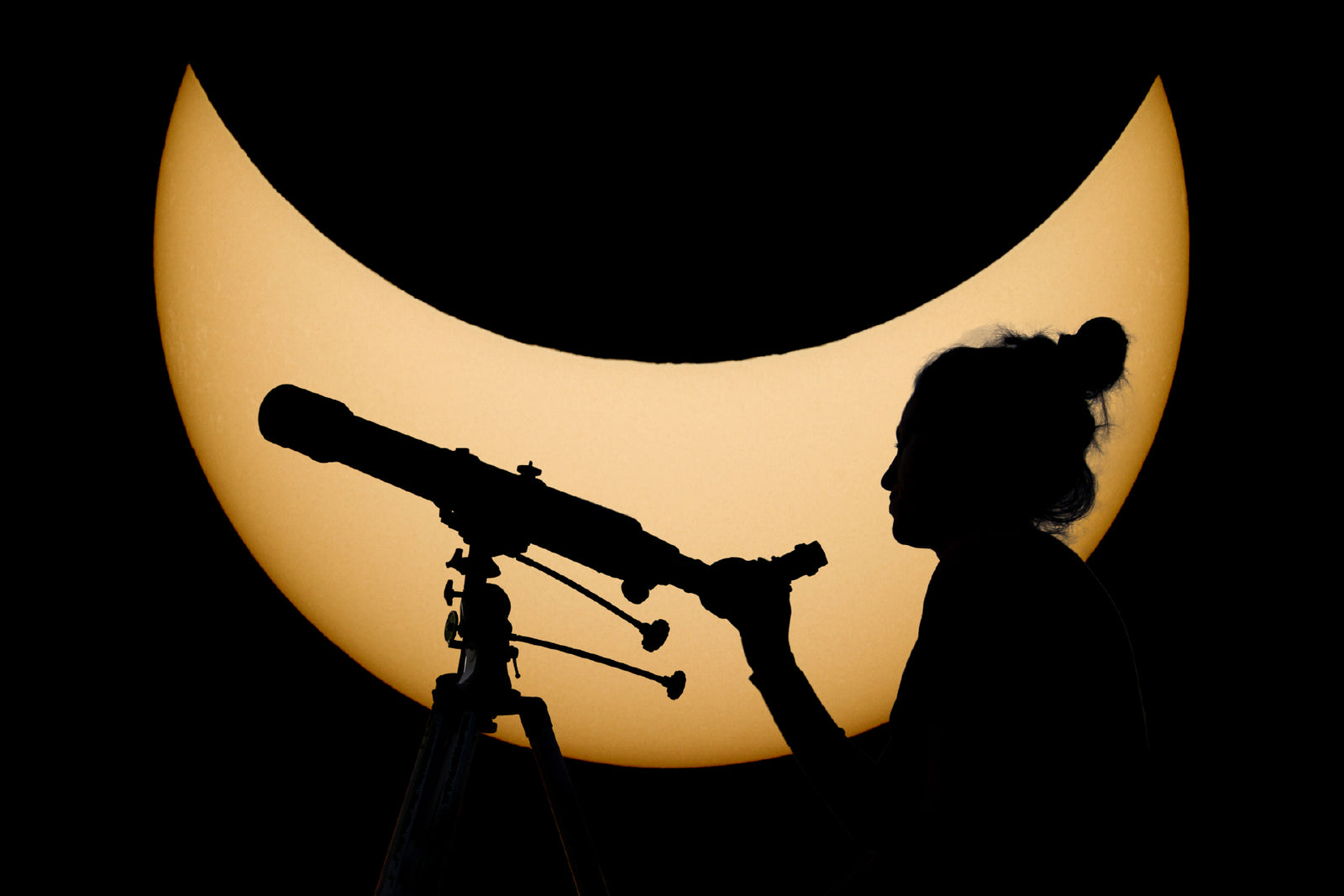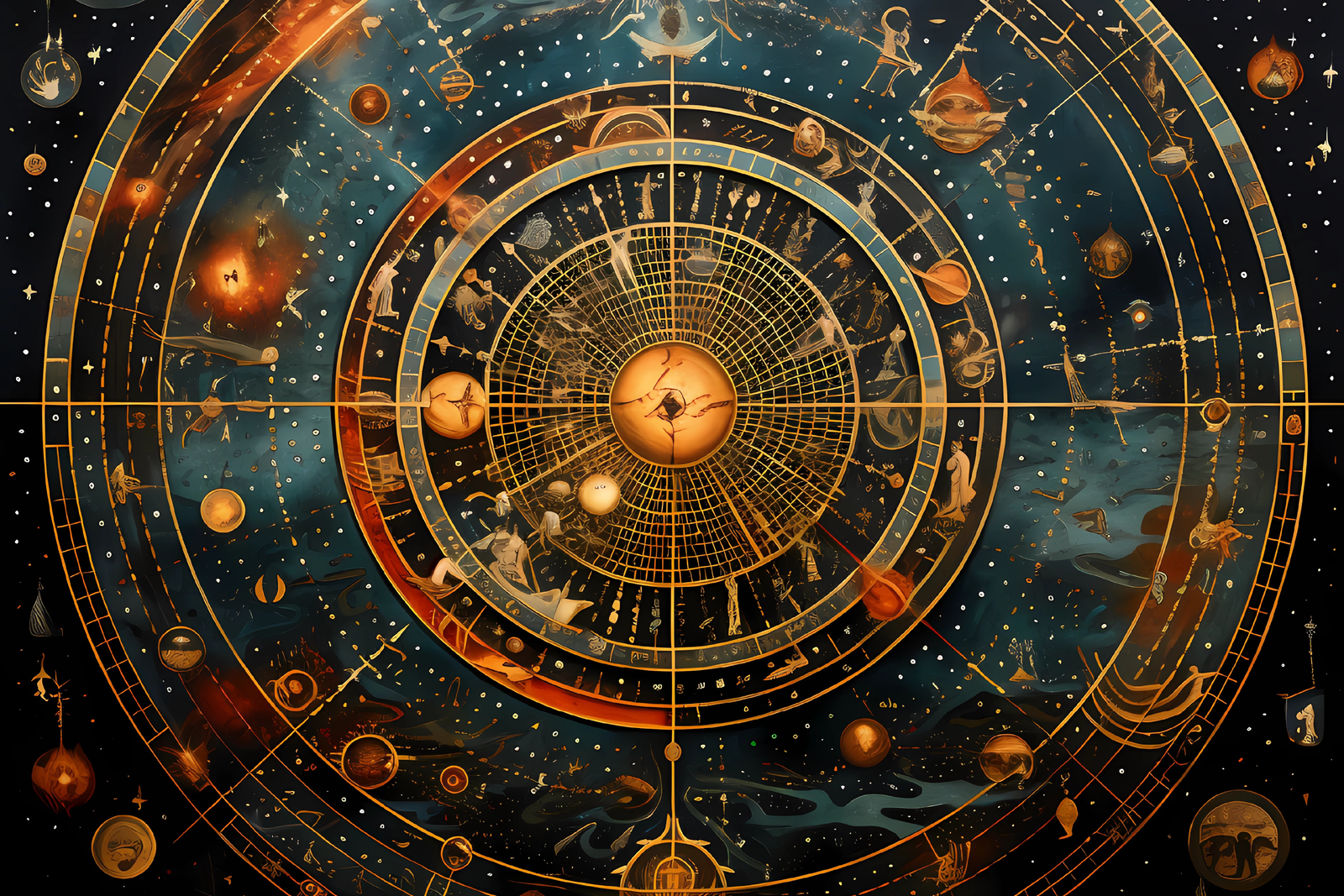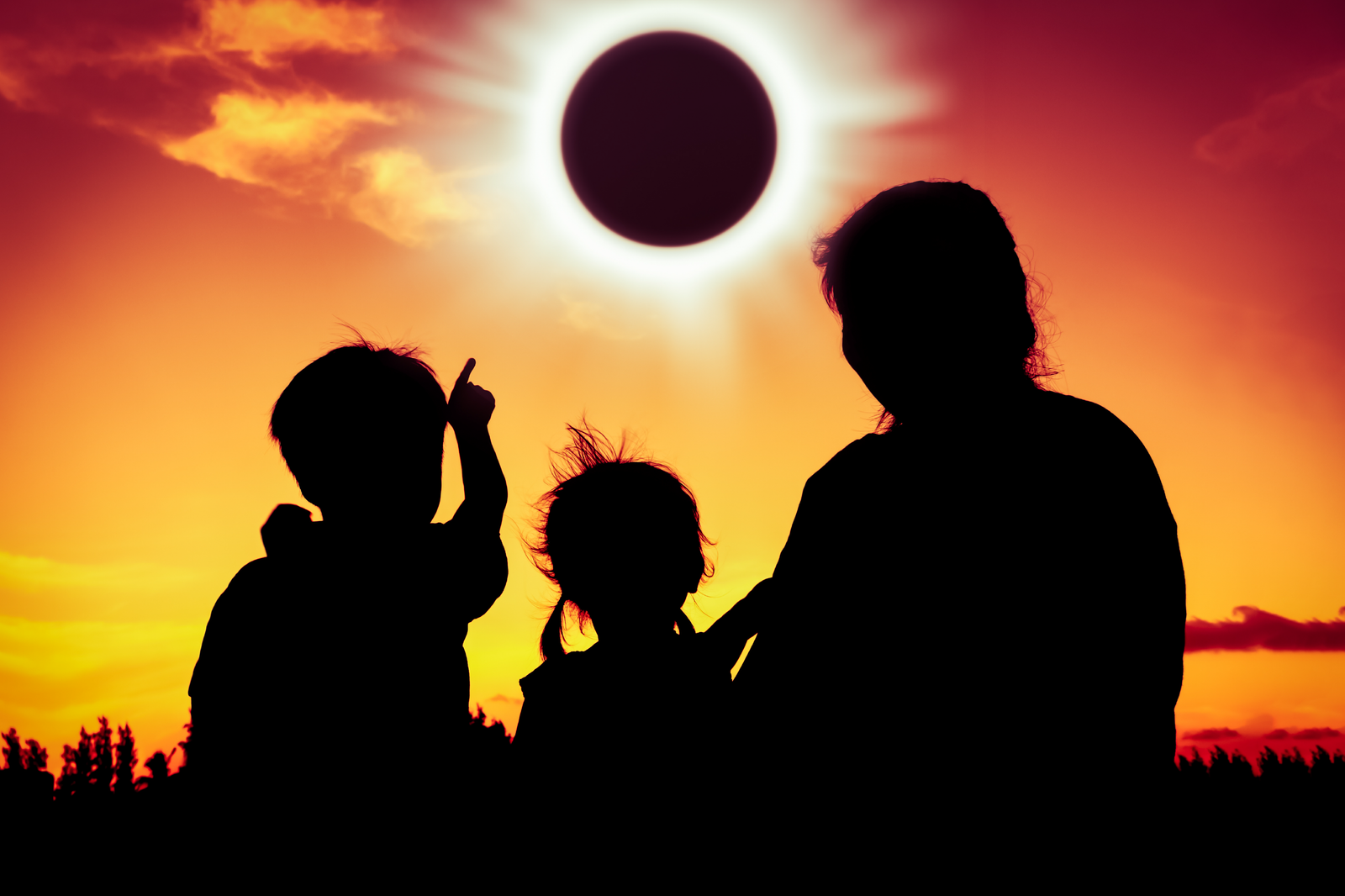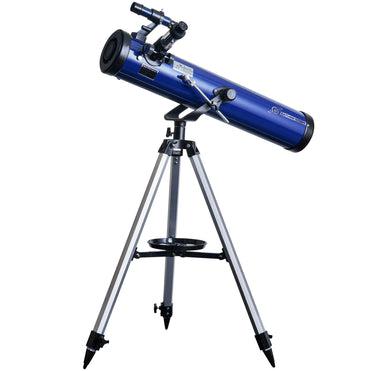What is the science that drives this mesmerizing celestial ballet?
A solar eclipse occurs when the moon casts its shadow on the Earth as it passes between the Earth and the Sun—a celestial alignment where the moon, Earth, and Sun align in perfect harmony.
The Monday, April 8, 2024, eclipse will be a total solar eclipse which occurs when the moon appears to totally obscure the Sun. It will be the last total solar eclipse visible from the contiguous United States until 2044.

People viewing the eclipse from locations where the Moon’s shadow completely covers the Sun – known as the path of totality – will experience a total solar eclipse. The sky will darken, as if it were dawn or dusk. Weather permitting, people along the path of totality will see the Sun’s corona, or outer atmosphere, which is usually obscured by the bright face of the Sun.
SOLAR & LUNAR ECLIPSES
Eclipses can be classified into two main types: solar eclipses and lunar eclipses.
Three types of solar eclipses

1. Partial Solar Eclipse: This happens when only a portion of the Sun is obscured by the Moon. This is more common than a total solar eclipse and can be observed from a broader geographical area. Think of it as a cosmic nibble rather than a full blackout – the sun is still partly shining, but with a subtle, mysterious twist.


3. Total Solar Eclipse: The grand finale of this celestial ballet. Total solar eclipses are relatively rare and typically happen about once every 18 months somewhere on Earth. In this breathtaking event, the moon completely envelops the sun, casting a shadow that turns day into night for a brief, spellbinding moment. It's an astronomical marvel that has captivated cultures throughout history, inspiring myths, legends, and a sense of cosmic wonder.
There are three types of lunar eclipses too:
- Total Lunar Eclipse: Occurs when the Earth comes directly between the Sun and the Moon, causing the Earth's shadow to fully cover the Moon. During a total lunar eclipse, the Moon can take on a reddish hue, often referred to as a "blood moon."
- Partial Lunar Eclipse: Happens when only a part of the Moon enters the Earth's shadow, resulting in a partial darkening of the lunar surface.
- Penumbral Lunar Eclipse: Occurs when the Moon passes through the Earth's penumbral shadow, causing a subtle shading on the lunar surface. Penumbral eclipses are more challenging to observe as the changes are relatively faint.
The number of solar and lunar eclipses in a year can vary. Some years may have more solar eclipses, while others may have more lunar eclipses. It's important to note that not everyone on Earth will witness a particular eclipse, as the visibility depends on the geographical location and the phase of the eclipse.
STUDYING ECLIPSES
Our understanding of eclipses has evolved from ancient observations and early models to a more sophisticated and accurate comprehension based on the principles of modern physics, observational technology, and advanced computational models.
Early Study
Ancient Observations:- Early human civilizations often viewed eclipses as significant and sometimes ominous events. Ancient cultures like the Babylonians, Greeks, Egyptians, and Chinese made observations and recorded details about solar and lunar eclipses.
- The ancient Greeks, particularly astronomers like Thales and Anaxagoras, made early attempts to understand the mechanics behind eclipses, recognizing the role of the Moon and its orbit.
Aristotelian and Ptolemaic Models:
- In ancient Greece, Aristotle proposed a geocentric model of the universe, suggesting that celestial bodies moved in circular orbits around the Earth. This model influenced astronomical thought for many centuries.
- Ptolemy, in his work "Almagest" (2nd century CE), provided detailed mathematical models for predicting the positions of the Sun, Moon, and planets but did not fully grasp the heliocentric nature of the solar system.
Copernican Revolution:
- Nicolaus Copernicus (16th century) proposed a heliocentric model of the solar system, placing the Sun at the center. This paradigm shift laid the foundation for a more accurate understanding of the relationships between the Earth, Moon, and Sun.
- Johannes Kepler's laws of planetary motion (early 17th century) and Galileo Galilei's telescopic observations further refined our understanding of celestial motions.
Kepler's Laws and Newtonian Physics:
- Kepler's laws, combined with Isaac Newton's law of universal gravitation, provided a comprehensive explanation for the motions of celestial bodies. This allowed for more accurate predictions of eclipses.
- Edmund Halley, using Newtonian physics, successfully predicted the return of the comet that now bears his name. His work demonstrated the power of applying mathematical principles to celestial phenomena.
Advancements in Observational Technology:
- The development of telescopes and other observational instruments in the 17th and 18th centuries allowed astronomers to make more detailed observations of eclipses and study their features.
- Observations of total solar eclipses provided valuable data, including the discovery of the solar corona.
Einstein's Theory of General Relativity:
- Albert Einstein's theory of general relativity (early 20th century) refined our understanding of gravity. While not directly related to eclipses, the theory has been used to predict subtle effects on the orbits of planets.
Advancements in Space Exploration:
- Space missions and observations from satellites and spacecraft have provided new perspectives on eclipses and improved our ability to study them.
- Technologies like the Hubble Space Telescope and solar observation satellites contribute to ongoing research on the Sun, Moon, and their interactions.
Modern Predictive Models and Technology:
- Modern astronomers use sophisticated computer models, calculations, and advanced technologies to predict eclipses accurately.
- The development of eclipse prediction software and the use of precise orbital data have improved the accuracy of predictions, allowing astronomers to forecast eclipses many years into the future.
Modern Science
Several types of scientists may be involved in the study of eclipses, each contributing their expertise to different aspects of the phenomenon.
-
Astronomers study celestial objects and phenomena. They play a crucial role in predicting and observing eclipses. They use mathematical models and calculations to predict the timing, duration, and visibility of eclipses.
-
Astrophysicists specialize in the study of the physical properties and the behavior of celestial bodies. They may investigate the underlying physical processes involved in eclipses, such as the dynamics of celestial bodies, gravitational interactions, and the effects of atmospheres.
-
Planetary Scientists study planets, moons, and other celestial bodies in our solar system. They may focus on understanding the geological and atmospheric conditions of the bodies involved in eclipses, such as the Moon and Earth.
-
Space Scientists study various aspects of space, including the space environment, cosmic phenomena, and the interactions between different celestial bodies. They may be involved in studying the effects of eclipses on space weather or the behavior of the Sun during solar eclipses.
-
Geophysicists study the physical properties of the Earth, including its structure and gravitational field. They may be interested in the impact of solar and lunar eclipses on Earth's atmosphere, gravity, and magnetic fields.
-
Meteorologists study the Earth's atmosphere and weather patterns. They may be involved in studying the atmospheric conditions during eclipses and how they affect visibility.
-
Photographers and Citizen Scientists play a crucial role in documenting and observing eclipses. While not traditional scientists, their images and observations contribute valuable data to scientific research.
Collaboration among these different scientific disciplines is common when studying eclipses, as each brings a unique perspective and expertise to the understanding of these celestial events. Additionally, advancements in technology and the participation of amateur astronomers and enthusiasts have expanded the collective knowledge and observational data related to eclipses. Ongoing research continues to deepen our understanding of the complex interactions between the Earth, Moon, and Sun.
ECLIPSES ARE PREDICTABLE
To predict solar eclipses, astronomers use mathematical models based on the positions and orbits of the Earth, Moon, and Sun. The key parameters involved include the synodic month (the time it takes for the Moon to return to the same phase, about 29.5 days), the inclination of the Moon's orbit, and the eccentricity of its orbit. These calculations allow astronomers to determine when and where solar eclipses are likely to occur.
Several factors contribute to the rarity of total solar eclipses:
-
Orbital Inclination: The Moon's orbit is inclined at about 5 degrees relative to the Earth's orbit around the Sun. This means that most of the time, the Moon passes slightly above or below the Sun, and an eclipse does not occur.
-
Orbital Eccentricity: The Moon's orbit is not a perfect circle but an ellipse. This means that the distance between the Earth and the Moon varies during the Moon's orbit. When the Moon is closer to Earth (perigee), it appears larger in the sky, increasing the chances of a total solar eclipse.
-
Apparent Size Matching: The apparent size of the Moon in the sky must be large enough to completely cover the Sun. Since the Moon's distance from Earth varies, there are times when the Moon is too far away to completely block the Sun, resulting in a partial or annular eclipse instead of a total eclipse.
ECLIPSES EFFECT ON THE ENVIRONMENT
Eclipses can have some subtle effects on the environment and various natural phenomena. The overall impact of eclipses on the Earth's environment is limited. The main significance of eclipses lies in their astronomical and celestial aspects—any effects on the Earth are relatively short-lived.
Some of the observed phenomena associated with eclipses include:
-
Temperature Changes: During a total solar eclipse, the sudden decrease in solar radiation can lead to a temporary drop in temperature in the shadowed regions. This cooling effect is more noticeable during the brief period of totality. After the eclipse, temperatures typically return to normal.
-
Animal Behavior: There have been anecdotal reports of changes in animal behavior during eclipses. Some animals may exhibit behaviors associated with the approaching darkness, such as birds returning to roost or nocturnal animals becoming more active.
-
Atmospheric Changes: The sudden reduction in solar radiation during a total solar eclipse can cause changes in the Earth's atmosphere. Researchers have observed alterations in wind patterns, air temperature, and atmospheric pressure during eclipses. These changes are generally small and short-lived.
-
Ionospheric Effects: The ionosphere, a region of the Earth's upper atmosphere, can experience temporary changes during solar eclipses. The sudden decrease in solar radiation can lead to variations in ionization levels and radio wave propagation in the ionosphere.
-
Shadow Bands: Before and after totality, observers on the ground may witness faint and elusive shadow bands, which are thin, wavy lines of alternating light and dark patterns moving rapidly across surfaces. These bands result from atmospheric turbulence and the filtering of sunlight through the Earth's atmosphere.
- Tides: There may be a small increase in tide height during an eclipse, but the effect is generally short-lived and returns to normal tidal patterns after the eclipse. While this alignment can have a slight influence on tides, it is not as substantial as the regular gravitational effects caused by the Moon's position in its orbit.
Understanding the science behind solar eclipses adds a layer of appreciation to the celestial show unfolding above.
MORE INFORMATION:















